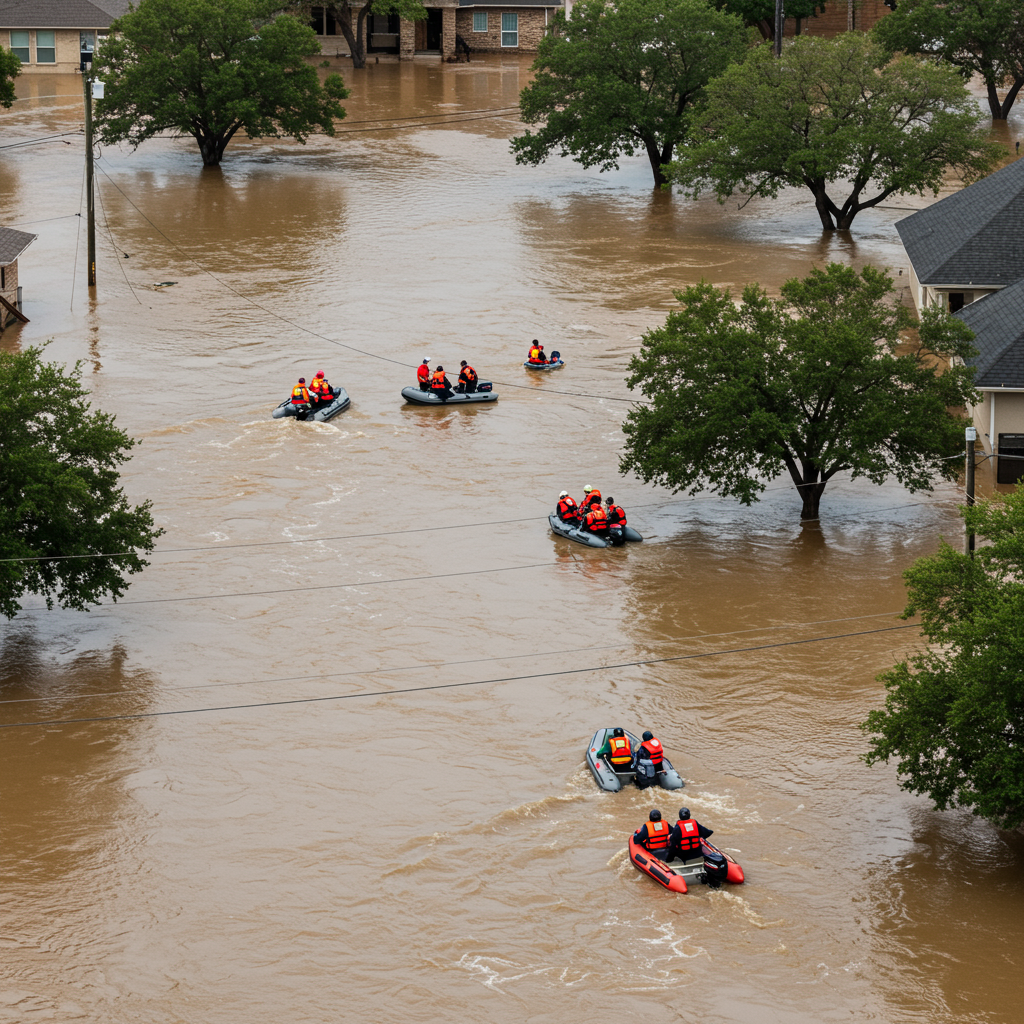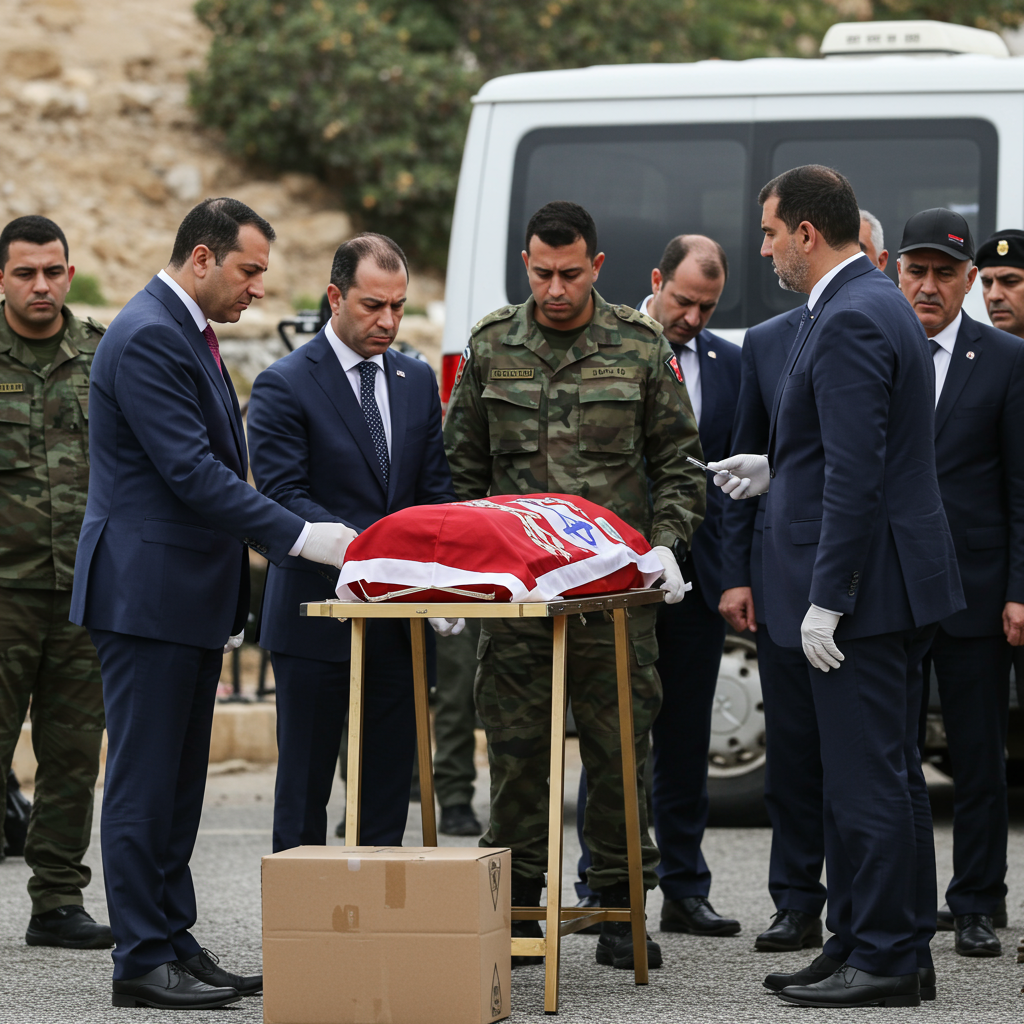A devastating flash flood event has unleashed chaos across parts of central texas, resulting in a tragic loss of life and prompting widespread search and rescue operations. Torrential rainfall led to “catastrophic” flooding, particularly impacting communities situated along the Guadalupe River. Emergency responders continue to navigate the perilous conditions, working tirelessly to locate dozens of individuals who remain unaccounted for. The scale of the disaster has prompted state officials to expand emergency declarations and seek federal assistance to aid recovery efforts.
The Catastrophe Unfolds
Heavy, unexpected downpours hammered central Texas, particularly the Hill Country region, on July 4th. This intense rainfall rapidly swelled rivers and waterways, causing them to overflow their banks with unprecedented speed and force. Officials described the flooding as catastrophic, catching many residents and visitors off guard. The Guadalupe River, a popular area for summer camps and recreation, was hit especially hard. Reports indicate the river in some areas rose by an astonishing 26 feet in just 45 minutes, far exceeding historical flood levels and previous forecasts. This sudden surge transformed calm waters into raging torrents, sweeping away everything in their path.
Unprecedented Speed and Impact
The speed and intensity of this Texas flooding event were unlike anything officials had predicted. Nim Kidd, chief of the Texas Division of Emergency Management, noted that initial forecasts anticipated only 3 to 8 inches of rain. The reality was significantly more severe, overwhelming local warning systems and leaving little time for evacuation. This region, often referred to as “flash flood alley,” is prone to rapid flooding due to its terrain, but the magnitude of this particular event was described as a complete shock. Homes were washed off foundations, vehicles were submerged or carried away, and critical infrastructure like roads and power lines were destroyed.
Rising Death Toll and Missing Persons
The human toll of the disaster is substantial and continues to mount. Initial reports cited dozens dead, with figures increasing as search efforts progressed. As of updates on July 5th, the death toll reached at least 43 in Kerr County alone, which appears to be the hardest-hit area. Across multiple affected counties, the total fatalities climbed to at least 50 according to some reports. Tragically, children are among the deceased. In Kerr County, officials confirmed 15 child fatalities out of the 43 reported deaths, alongside 28 adults. This devastating loss highlights the widespread impact on families and communities.
The Search for the Missing
Adding to the grief is the significant number of people who remain missing. As of the latest reports, 27 individuals are still unaccounted for across the affected areas. A particular concern surrounds the dozens of summer campers who were in the region when the floods struck. From Camp Mystic, a large children’s camp along the Guadalupe River, between 23 and 27 campers were reported missing. While other nearby camps like Camp La Junta and Camp Waldemar reported all their campers and staff were safe, Camp Mystic sustained catastrophic damage, losing power and road access, complicating rescue efforts. The exact total number of missing persons beyond the identified campers is difficult to ascertain due to the holiday weekend and the influx of visitors to the area.
Heroic Rescue Operations Underway
Amidst the devastation, numerous acts of heroism have unfolded as emergency responders work tirelessly to save lives. Governor Greg Abbott commended rescue workers for saving over 850 people in the initial 36 hours following the floods. These rescues were often conducted under extremely challenging conditions, with some survivors found “clinging to trees to save their lives.” Search and rescue operations are ongoing and extensive, utilizing a variety of resources. Teams are actively scouring flooded areas by air, water, and ground.
Multijurisdictional Response
The rescue effort involves a coordinated response from local, state, and federal agencies. Texas DPS troopers, the state’s National Guard, and the U.S. Coast Guard are participating, deploying helicopters with hoist capabilities, drones, high water vehicles, boats, and rescue divers. Maj. Gen. Thomas Suelzer reported hundreds of air rescues alone, highlighting the necessity of aerial support in reaching stranded individuals and surveying damaged areas. Officials have stated their unwavering commitment to continuing the search relentlessly until every single person is accounted for, emphasizing that “every minute counts” in finding potential survivors.
Official Response and Declarations
In response to the escalating crisis, Texas Governor Greg Abbott has taken swift action. He signed an expanded emergency declaration to include several counties impacted by the disastrous flooding. The declaration now covers Bexar, Burnet, Caldwell, Guadalupe, Travis, and Williamson counties, ensuring access to state resources for response and recovery. Governor Abbott also signed a request for a federal emergency declaration, seeking immediate and ongoing assistance from the federal government. This step is crucial for securing federal aid and resources needed for the extensive recovery ahead.
State and Federal Commitment
State officials, including Governor Abbott and Lieutenant Governor Dan Patrick, have expressed profound sorrow for the victims and their families. They have pledged full state support for the search and recovery operations. Homeland Security Secretary Kristi Noem visited the affected areas, conveying President Donald Trump’s heartbreak over the loss of life and his administration’s commitment to providing federal resources. President Trump himself stated that the federal government would “take care of it,” assuring Texas officials of support in coordinating aid and mitigating damage. The unified response across different levels of government underscores the severity of the crisis and the collective effort to address it.
The Ongoing Threat
While initial rescue efforts have saved hundreds, the danger has not fully subsided. Severe weather, including additional torrential rains and flash flood warnings, has persisted in parts of central Texas. A second significant flash flood event occurred northeast of the Guadalupe River area, impacting counties like Burnet, Williamson, and Travis, where flash flood emergencies were issued due to rapid, heavy rainfall. These conditions pose ongoing risks to residents and complicate search efforts in already saturated areas. Authorities continue to urge caution and advise residents in threatened areas to seek higher ground if warnings are issued. The focus remains on finding the missing and beginning the long process of recovery for the impacted communities.
Frequently Asked Questions
What caused the severe Texas flooding?
The catastrophic Texas flooding was triggered by extremely heavy rainfall that significantly exceeded weather forecasts. This unexpected downpour fell directly on the headwaters of rivers like the Guadalupe, causing them to rise with unprecedented speed – up to 26 feet in under an hour in some areas. The region’s terrain, known as “flash flood alley,” contributed to the rapid runoff and intensity of the floodwaters, overwhelming local infrastructure and warning systems.
Which Texas counties were included in the disaster declaration?
Governor Greg Abbott signed an expanded emergency declaration to cover several counties severely impacted by the flooding. The counties included in this declaration are Bexar, Burnet, Caldwell, Guadalupe, Travis, and Williamson counties. This declaration allows these areas access to state resources to assist with response, rescue, and recovery efforts, and supports the request for federal aid.
What is the status of search and rescue efforts for missing persons?
Search and rescue operations are currently ongoing across the affected areas in central Texas. Teams are using helicopters, boats, drones, and ground crews to look for individuals still unaccounted for. Officials report that over 850 people have been rescued from floodwaters so far. While the exact total number of missing persons is difficult to determine, at least 27 individuals, including dozens of summer campers, are still actively being sought by rescue teams.
Conclusion
The Texas flooding event has inflicted immense tragedy on the state, bringing an alarming death toll and leaving many families anxiously awaiting news of missing loved ones. While heroic rescue operations have saved hundreds, the priority remains finding everyone unaccounted for. State and federal resources are being mobilized to support these efforts and begin the long road to recovery. The resilience of Texans is being tested once again as communities grapple with the aftermath of this unprecedented natural disaster. Continued vigilance is necessary as weather threats persist in some areas.




